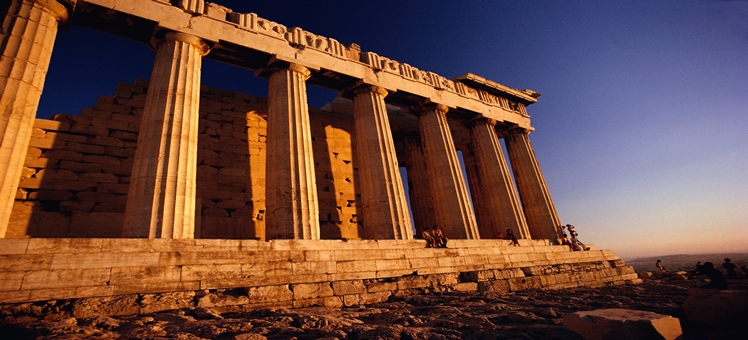
Athens could be considered the mother of western civilisation. Every year, the Greek capital attracts huge throngs of tourists who come to visit its historical sites that have stood as icons for centuries. From its temples and museums to its traditional ways of living, Athens is a paragon of Greek history.
AcropolisThe Acropolis is one of the most recognisable sites in the world. This sacred, white rock – stained a creamy color with age – stands as a marker of where western civilisation was born. The ancient citadel contains a few buildings of great historic importance, including the Parthenon, which is a temple dedicated to the goddess Athena, the patron deity of Athens. The Acropolis sits on a hill overlooking the heart of Athens, dominating the city skyline as it has done for more than 2000 years.
Anafiotika
Beyond the tourist-dominated heart of Plaka you’ll find the Anafiotika quarter. This quiet, village-like neighborhood has narrow and bendy streets winding through residential areas full of cubed houses. Anafiotika is so quiet that often the only sign of other people is in the clothes lines with their hanging washing. These clothes and the splashes of color on balconies and rooftops give a nice decoration to this picture-friendly part of Athens.Temple of Olympian Zeus
The Temple of Olympian Zeus is the largest in Greece. Building began around 590 BC and took 700 years to complete. The final result was worth the wait as the 104 Corinthian columns held up what was a landmark of engineering and architecture. Today, 15 of these columns still stand, preserving this colossal structure that has grown with Athens. This iconic building is found in the heart of Athens, in Plaka, close to Syntagma.
Theatre of Dionysus
As the site where works of Sophocles, Euripides, and Aristophanes were performed, the Theatre of Dionysus is steeped in Greek history. At its zenith, the theater held 17,000 spectators in 64 tiers, of which only 20 are still intact. The stone and marble structure was used for festivals in honour of the god Dionysus, the god of grape harvest and wine. The amazing thing about this theater is that it was built for optimum acoustics; this was built with such skill that these acoustical properties are considered perfect under modern tests.
Foundation for the Hellenic world
To see what all of Athens’ wondrous ruins would’ve looked like in their heyday, you can visit the Foundation for the Hellenic World. This is a virtual reality trip through Ancient Athens. The high-tech, gently-domed reality theater guides you on a tour of the Ancient Agora (market-place) while their ‘time machine’ offers 3D screens stretching from floor to ceiling that feature ancient Greek monuments and the world of Greek costumes.